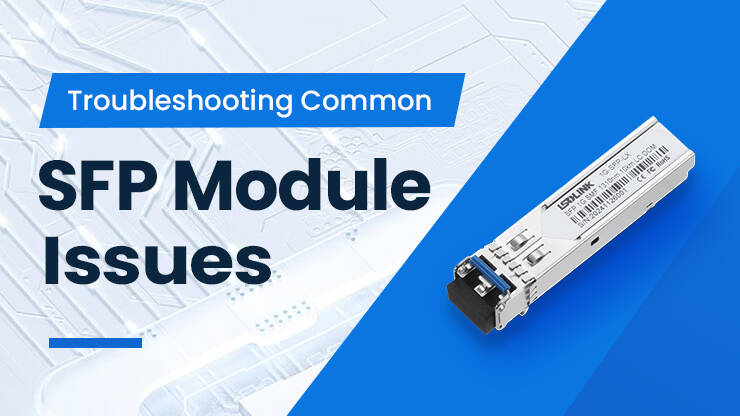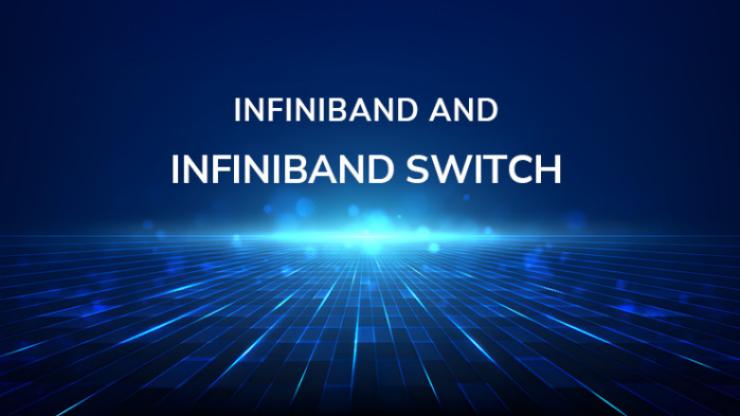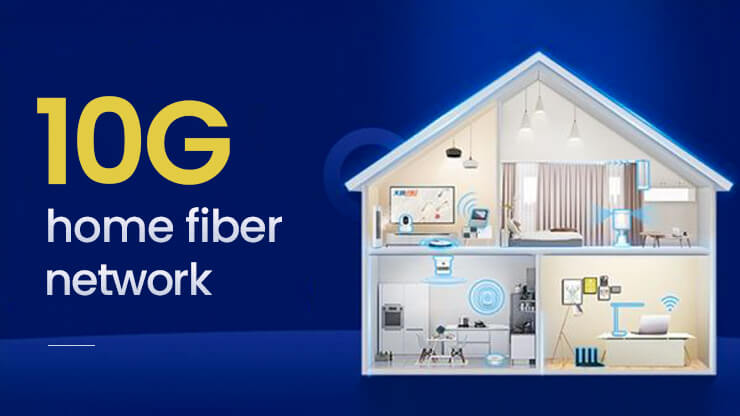The Truth About Cat 5e Ethernet Speeds in 2025 Networks
The Positioning and Controversies of Cat 5e Networks in 2025
Network cables are essential in our daily lives, as they transmit internet connectivity throughout our homes, greatly enhancing convenience. The Cat 5e network cable, also known as Ultra Category 5 cable, is a widely used type of network cable that serves as an enhanced version of the Category 5 cable. This cable supports data transmission rates of up to 1 Gbps over distances of 100 meters and operates at a bandwidth of 100 MHz. It is compatible with Gigabit networks and supports Power over Ethernet (PoE) technology. Its affordability, flexibility, and ease of installation make it an ideal choice for home networks, as well as for small and medium-sized businesses. Cat 5e is particularly advantageous for typical internet access, video transmission, and smart device connectivity, making it a cost-effective option for various scenarios.
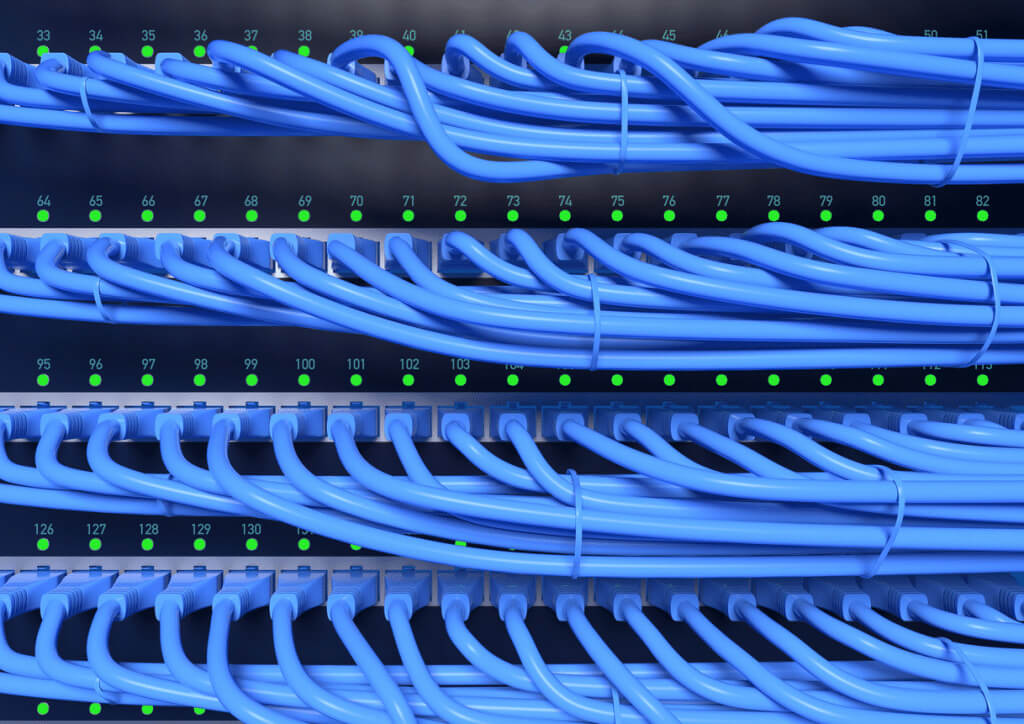
Why Cat 5e Remains a Popular Choice for Business and Home Networks
As networking technology rapidly evolves, both home and business networks are progressing towards the era of 10 Gigabit connections. Cables like Cat 6, Cat 6a, Cat 7, and even Cat 8 have become mainstream options for network deployments. Despite this, Cat 5e cables, introduced in 2001, continue to be widely used by many households and businesses. The enduring popularity of Cat 5e cables can be attributed to their technical characteristics and market demand. As the standardized cable for Gigabit Ethernet, Cat 5e offers up to 100MHz of bandwidth over a transmission distance of 100 meters, making it suitable for current mainstream applications. Additionally, Cat 5e is compatible with existing network equipment like switches and routers and supports Power over Ethernet (PoE) technology. This makes it ideal for deploying low-power devices such as IP cameras and wireless access points. Moreover, Cat 5e cables are generally less expensive and have more established construction standards compared to Cat 6 and Cat 6a cables, making them a cost-effective choice for home and network deployments. Although there is a growing demand for 10Gbps networks, Cat 5e can still deliver speeds of up to 2.5Gbps over short distances (up to 30 meters) and allows for smooth transitions in hybrid networking setups.
Changing Network Demands in 2025: The Challenges of Bandwidth Pressure and Latency Sensitivity
As we move into 2025, both home and enterprise networks are undergoing significant transformation due to the increasing density of IoT devices, the widespread use of 4K and 8K video streaming, the popularity of cloud-native applications, and the stringent real-time requirements of industrial automation. The Cat 5e cable, which has been the standard for the Gigabit era, now faces serious challenges.
In terms of bandwidth, Cat 5e supports up to 100 MHz, which can accommodate the data transmission needs of traditional Gigabit networks. However, in scenarios with multiple traffic flows—such as multi-channel 8K video conferencing that demands real-time data synchronization—the actual throughput may fall below the theoretical maximum. Although Cat 5e can achieve 10 Gigabit transmission over short distances, it struggles to maintain stable performance in high-interference environments because it relies on complex DSP (Digital Signal Processing) algorithms. This makes it less suited to the evolving demands of the AI era.
Another critical factor is the zero-tolerance policy for latency. The rise of industrial automation and robotics requires real-time rendering of various VR and AR scenes, with an end-to-end latency requirement of less than 1 millisecond. While Cat 5e does not have any inherent delay, it often struggles to meet stability requirements due to its unshielded twisted pair (UTP) design. This design is prone to triggering signal re-transmissions in environments with high electromagnetic interference (EMI), leading to jitters in signal transmission.
Cat 5e Technical Specifications and Theoretical Speed Revisited

Review of Basic Parameters: Bandwidth, Frequency, and Transmission Distance
In an ideal environment, Cat 5e cables serve as the backbone of Gigabit networks, capable of transmitting data at a rate of 1 Gbps over distances of up to 100 meters. They offer a bandwidth of 100 MHz, which can potentially be increased to the rate of 2.5 Gbps within a range of 30 meters. However, in practical scenarios, factors such as cable quality and construction techniques often result in reduced bandwidth, failing to meet the expected performance. Additionally, due to the design of unshielded twisted pair (UTP) cables, the bit error rate (BER) tends to increase significantly in environments with dense electromagnetic interference. Cat 5e cables are designed to support stable transmission when powered over Ethernet (PoE) with a supply of less than 30W. However, they may experience slight signal attenuation due to heat generation, particularly for high-frequency signals. This effect is more pronounced over longer distances, making it challenging to maintain transmission quality over extended lengths.
Standard Update: IEEE Compatibility Support for Cat 5e
2.5Gbps Multi-Rate Adaptation under the 802.3bz Standard
The update to the IEEE 802.3bz specification introduces two transmission rates: 2.5Gbps and 5Gbps. This update is significant because it allows existing network cables to support higher transmission speeds. Specifically, Cat 5e cables can now transmit data at 2.5Gbps over short distances, while 5Gbps transmission is designated for Cat 6 cables. The technical mechanism behind this is the reduction of signal pulse frequency and the multiplexing of four pairs of twisted pairs, which increases the transmission capacity of each pair to 625Mbps or 1250Mbps, thus achieving the combined rates of 2.5Gbps and 5Gbps. By integrating Digital Signal Processing (DSP) technology to counter high-frequency attenuation, this development enables the current global stock of over 70 billion meters of Cat 5e cables to address bandwidth limitations without needing to replace the cables, thereby supporting the demands of WiFi 6. The 802.3bz standard provides a smooth transition path to the 10Gbps era, making Cat 5e a pivotal foundation for cost-effective network upgrades.
Feasibility Analysis of Ultra Gigabit Transmission over Short Distances (within 30m)
The IEEE 802.bz update offers Cat 5e cables for short-range ultra-gigabit transmission. Testing shows reduced signal attenuation and crosstalk, making it suitable for 8K video streaming and real-time data synchronization. However, it’s crucial to note that the design of unshielded twisted pairs (UTP) still carries the risk of signal-to-noise ratio degradation, especially in high electromagnetic interference environments. Therefore, the stability of data transmission depends on the use of high-quality wires and low-jitters equipment. A balanced solution involves utilizing optical fiber for the core network, combined with Cat 5e for access, to optimize both cost and performance.
Cat 5e Speed Performance in Real Network Environments
Lab Tests vs. Real-World Scenarios: The Impact of Interference and Cabling Quality
The nominal performance of Cat 5e cable is typically based on ideal laboratory conditions. However, in real-world deployments, factors such as electromagnetic interference, cable quality, and construction specifications can significantly impact its transmission capabilities, often leading to unpredictable fluctuations in performance.
Lab Tests: Baseline Performance under Ideal Conditions. In a controlled lab environment with no interference, stable temperatures, and properly laid cables, high-quality Cat 5e can consistently achieve nominal data rates. For instance, a transmission rate of 2.5 Gbps, in accordance with the 802.3bz standard, can be achieved over a distance of 30 meters with a bit error rate (BER) of less than 1E-12. Additionally, the attenuation remains below 24 dB over 100 meters of Gigabit transmission. However, this scenario overlooks the complexities inherent in real-world environments, particularly the following key factors:
- Electromagnetic Interference (EMI). Cat 5e’s unshielded twisted pair (UTP) design makes it vulnerable to external EMI. Tests indicate that when cables are run parallel to strong power lines or positioned near high-power motors, the signal-to-noise ratio in the high-frequency band (50 MHz) can drop by 6-10 dB. This reduction can lead to a 30-50% decrease in effective throughput when operating at 2.5 Gbps.
- Poor-Quality Connectors and Cable Bending. Using low-quality connectors, such as those with substandard copper plating, can increase contact resistance, resulting in impedance mismatches. Cat 5e cables have a minimum bending radius of about 2 cm, and bending them beyond this limit can distort the twisted-pair structure, exacerbating near-end crosstalk. Measurements indicate that after multiple right-angle bends, the 2.5 Gbps transmission BER for a 30-meter Cat 5e cable deteriorates from 1E-12 to 1E-8, while the effective bandwidth reduces to 1.2 Gbps.
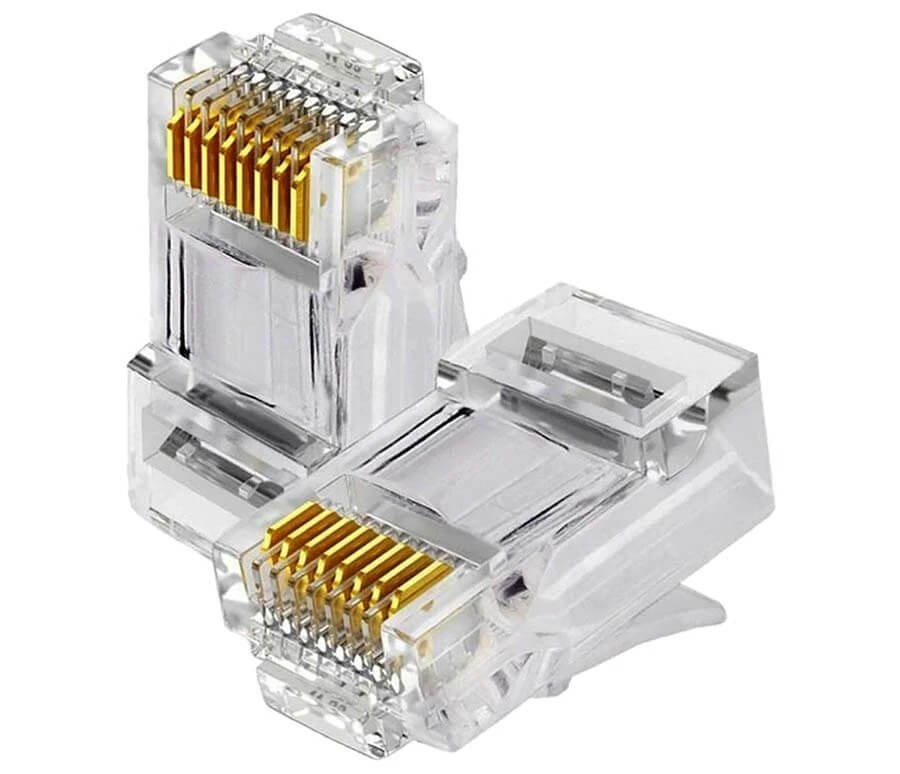
Adaptability for Emerging Application Scenarios in 2025
In 2025, Category 5e (Cat 5e) cables demonstrate new adaptability in various scenarios, including industrial IoT, smart homes, and lightweight edge computing. In industrial automation, Cat 5e cables provide stable power and data transmission for devices such as sensors, machine vision cameras, and low-power robots through Power over Ethernet (PoE) technology.
In smart home environments, Cat 5e supports connections among multiple devices with its cost-effectiveness, enabling functionalities like 8K video streaming and smart security systems. Its short-distance transmission capability of up to 2.5 Gbps meets the requirements for Wi-Fi 7 backhaul links. However, it is important to avoid running Cat 5e cables in parallel with home appliances that emit high-frequency electromagnetic interference.
Comparison of Cat 5e Performance with Other Ethernet Standards
Cat 5e vs. Cat 6/6a: Cost vs. Performance Trade-off
Cost-Effective Advantages of Cat 5e in Short-Distance Scenarios
Cat 5e has a significant advantage in short-distance (≤30m) light-load scenarios, as it costs about one-third of Cat 6a while utilizing mature technology. It can support data rates of up to 2.5Gbps, making it ideal for home multi-device interconnections, SMB office networks, and Wi-Fi 6/7 backhaul. For example, Cat 5e can be effectively deployed in smart homes to carry multiple 8K video streams without the need to upgrade cables. Additionally, the flexibility of the 24AWG wire gauge makes it more suitable for the complex wiring environments found in older buildings, while also lowering construction costs.
Cat 6a for Long-Distance and High-Load Scenarios
Cat 6a supports transmission speeds of up to 10Gbps over distances of 100m, with a maximum bandwidth of 500MHz. Its shielded design (F/UTP) significantly reduces crosstalk, making it suitable for data centers, industrial automation, and high-density enterprise networks. For instance, it is well-equipped for 4K real-time video editing or multi-computer interconnections for AI edge computing nodes, ensuring low bit error rates (BER) and stable latency. Furthermore, Cat 6a supports higher power levels under Power over Ethernet (PoE++) with a capacity of up to 90W, accommodating future high-power IoT devices.
Comparison of Cat 5e and Cat 6/6a Parameters
| Parameters | Cat 5e | Cat 6 | Cat 6a |
| Bandwidth | 100MHz | 250MHz | 500MHz |
| Maximum Transmission Rate | 1Gbps (≤100m) | 10Gbps (≤55m) | 10Gbps (≤100m) |
| Wire Diameter | 24 AWG | 23 AWG | 22-23 AWG |
| Cable Construction | UTP | UTP/FTP | F/UTP |
| PoE Support | PoE (≤30W) | PoE+ (≤60W) | PoE++ (≤90W) |
| Immunity | Weak | Strong | Strong |
| Application Scenarios | Home Networks, SMB Offices | High-density Enterprise Networks, Lightweight Data Centers | Data Centers, Industrial Automation, 10G Backbone |
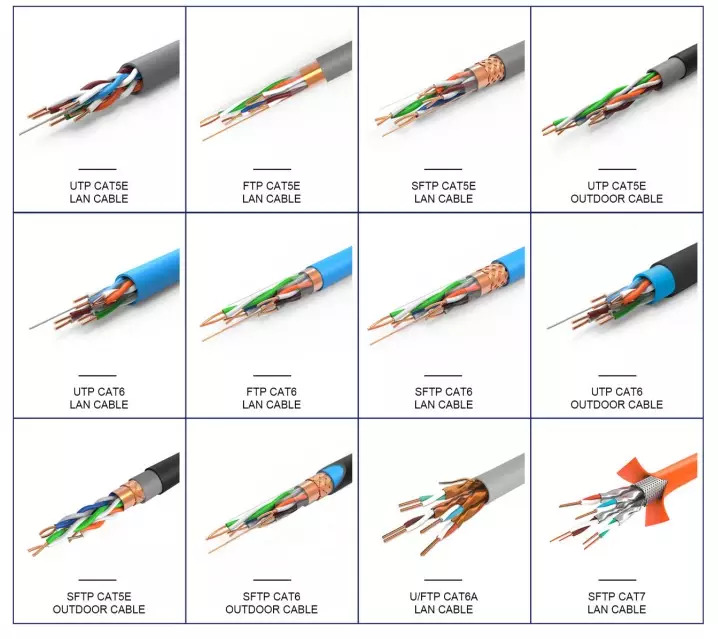
Competition Between Fiber and Wi-Fi 7: The Irreplaceability of Cat 5e
With advancements in fiber technology and Wi-Fi 7, Cat 5e continues to hold an irreplaceable position due to its low cost, adaptability for end-of-pipe connections, and the advantages of existing infrastructure.
While optical fiber offers excellent performance, its deployment cost is approximately five times that of Cat 5e and requires specialized installation. In contrast, Cat 5e remains the preferred choice for small and medium-sized scenarios due to its affordability and ease of maintenance. Although Wi-Fi 7 supports theoretical speeds of up to 46 Gbps, it necessitates high-frequency equipment that operates on a 320 MHz channel, resulting in significant deployment costs and wireless stability that does not match that of wired connections.
Globally, there are over 70 billion meters of Cat 5e cable already in use, forming an extensive infrastructure network. This is especially important in older buildings, where the expense of redeploying cables can be prohibitive. By using existing Cat 5e cables for core modifications along with updated end equipment, it is possible to meet the needs of most scenarios while significantly reducing costs.
Engineering Optimization Strategies for Maximizing Cat 5e Performance
Cabling Optimization: Reducing Crosstalk and Practical Tips for Minimizing Signal Attenuation
As Gigabit networks have become mainstream, upgrading Cat 5e cables is essential to meet high bandwidth demands and ensure stability in order to maintain market share. One key strategy is to optimize cabling engineering. When constructing network cabling, the following points should be considered:
Avoid Sources of Interference: It is crucial to maintain at least a 30 cm distance between Cat 5e cables and strong power lines, or to utilize orthogonal cross-wiring methods. This helps reduce degradation of the signal-to-noise ratio caused by electromagnetic interference. In high-interference areas, such as factory floors, consider using partially shielded cables or Cat 5e cables with metal shielding to ensure stable data transmission.
Control Cable Bending and Stretching: The bending radius for Cat 5e cables should be approximately 2 cm. It is important to avoid excessive bending, as this can lead to high near-end crosstalk due to deformation of the internal twisted-pair structure. Additionally, the cable should not be stretched beyond 110N to prevent impedance mismatch caused by the elongation of the conductors. By following these guidelines, the performance and reliability of Cat 5e cables can be significantly enhanced.
Equipment Configuration: Selection of Switches and Network Cards
To fully utilize the advantages of Cat 5e cables, it is essential to choose compatible equipment. Without the right components, even high-bandwidth cables may fail to deliver optimal performance. Firstly, it’s advisable to deploy a multi-rate switch. This type of switch can support output rates of up to 2.5 Gbps within a distance of 30 meters, so it should prioritize the use of network cards and switching equipment that support 2.5G multi-rate capabilities. At the end of the equipment chain, low-rate, high-power consumption Power over Ethernet (PoE) devices, such as wireless access points (APs) and outdoor cameras, can be utilized. It’s important to monitor cable temperature to prevent overheating and overloading, which can lead to faster aging of the cables.
Typical Scenarios for Cat 5e in 2025 and Related Controversies
Typical Scenarios for Cat 5e in 2025 and Related Controversies
In 2025, as WiFi 7 technology and 10GbE networks continue to gain traction, Cat 5e, which has been a staple cable of the Gigabit era, is being gradually replaced by Cat 6 and 6a cables. However, Cat 5e is still suitable for certain application scenarios that do not demand high-performance specifications due to its cost-effectiveness. For example, in residential settings, Cat 5e can facilitate short-range 10Gb transmission, making it adequate for basic network cabling solutions in small homes. It can effectively meet the interconnection needs of smart home devices and is priced at roughly one-third the cost of Cat 6a. Additionally, in small and medium-sized enterprises, Cat 5e is sufficient for daily office tasks such as document transmission and video conferencing. It can support devices using Power over Ethernet (PoE) technology with power requirements of less than 30W, which enables it to power wireless access points (APs), IP cameras, and other devices. This integrated data transmission solution is suitable for applications in warehousing, logistics, and similar environments. Moreover, Cat 5e can be used in backbone networks in conjunction with optical fiber, allowing for a balanced approach to cost and performance at the tail end of the network.
Scenarios Requiring Upgrades to Higher Standards
As previously mentioned, the engineering environment is experiencing increasingly higher demands for bandwidth and low latency. With the development of smart cities, there is a growing number of scenarios that require low-latency intelligent devices. Unfortunately, these demands cannot be met by Cat 5e cables. In engineering scenarios, such as machine collaboration, real-time synchronization of sensor data, and real-time control functions, an end-to-end delay of less than 1 millisecond is essential. Additionally, the requirements for anti-jamming capabilities are very high. The unshielded design of Cat 5e is susceptible to triggering signal re-transmissions, leading to uncontrollable errors. On the other hand, Cat 6a features a shielded structure and supports high bandwidth of 500 MHz, ensuring stable data transmission. Moreover, for the core link construction of smart cities, the general requirement over distances up to 100 meters is to handle 10 Gbps traffic. The maximum capacity of Cat 5e is only 2.5 Gbps, which is insufficient to meet this demand. In environments with high-density cameras and AI applications, relying on Cat 5e cables can result in signal jitters. Therefore, transitioning to Cat 6a or fiber optics is becoming a necessary option for deployment. The continued use of Cat 5e will depend on two main factors: cost sensitivity and performance needs. By 2025, while some lightweight scenarios will likely still use Cat 5e, the accelerating demand for high-load, low-latency networks will lead to an increased adoption of Cat 6a and fiber optic networks.
Frequently Asked Questions (FAQ)
Q: Is it worth upgrading from Cat 5e to Cat 6/6a? Is the performance improvement significant enough to justify the price difference?
A: Ultimately, it depends on your specific needs. If you’re using Cat 5e for basic home office tasks or entertainment, its performance is generally sufficient. However, if you require speeds of 10 Gbps for tasks like video editing, AI training, or high-bandwidth applications, upgrading to Cat 6a is advisable. For most users not seeking extreme network performance, sticking with Cat 5e should be fine.
Q: Is the PoE (Power over Ethernet) capability of Cat 5e obsolete? Can it support high-power smart devices?
A: In many cases, Cat 5e’s PoE power supply of up to 30W is still adequate for common devices such as cameras and access points (APs), which typically consume less than 15W. However, if you plan to use high-demand devices like panoramic cameras or require long-distance power, it’s a good idea to use high-quality Cat 5e cables or consider upgrading to Cat 6a. Overall, Cat 5e’s power supply capacity is not obsolete, but it’s important to carefully plan the power requirements and density of your device usage.
In This Article
- 1 The Positioning and Controversies of Cat 5e Networks in 2025
- 2 Cat 5e Technical Specifications and Theoretical Speed Revisited
- 3 Cat 5e Speed Performance in Real Network Environments
- 4 Comparison of Cat 5e Performance with Other Ethernet Standards
- 5 Engineering Optimization Strategies for Maximizing Cat 5e Performance
- 6 Typical Scenarios for Cat 5e in 2025 and Related Controversies
- 7 Frequently Asked Questions (FAQ)
Show All
Collapse



